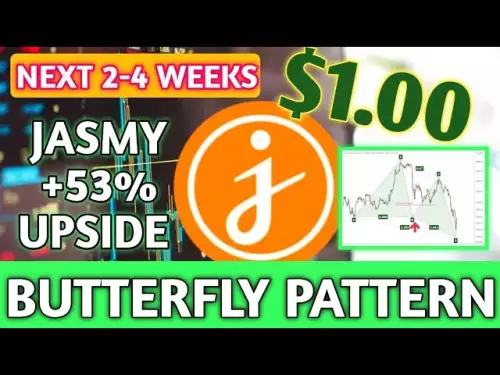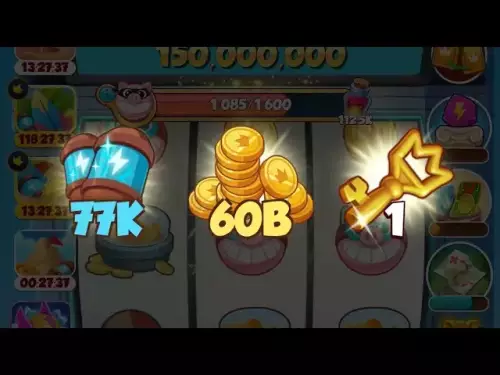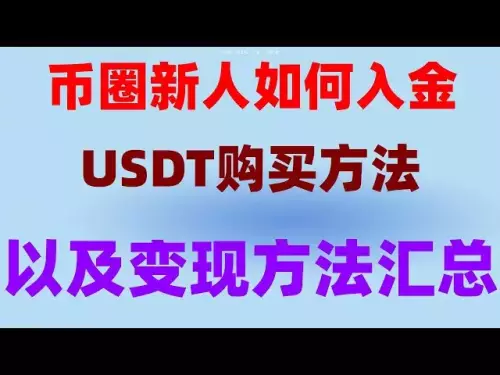-
 Bitcoin
Bitcoin $110100
-2.26% -
 Ethereum
Ethereum $4438
-5.93% -
 XRP
XRP $2.905
-3.43% -
 Tether USDt
Tether USDt $1.000
0.03% -
 BNB
BNB $846.7
-3.47% -
 Solana
Solana $188.1
-9.47% -
 USDC
USDC $0.9999
-0.01% -
 TRON
TRON $0.3450
-3.43% -
 Dogecoin
Dogecoin $0.2116
-7.69% -
 Cardano
Cardano $0.8449
-7.62% -
 Chainlink
Chainlink $23.34
-9.44% -
 Hyperliquid
Hyperliquid $45.36
-1.87% -
 Stellar
Stellar $0.3886
-4.00% -
 Ethena USDe
Ethena USDe $1.001
-0.01% -
 Sui
Sui $3.394
-7.22% -
 Bitcoin Cash
Bitcoin Cash $541.6
-6.98% -
 Hedera
Hedera $0.2360
-4.37% -
 Avalanche
Avalanche $23.49
-7.62% -
 UNUS SED LEO
UNUS SED LEO $9.560
-0.17% -
 Litecoin
Litecoin $110.4
-5.21% -
 Toncoin
Toncoin $3.155
-4.43% -
 Shiba Inu
Shiba Inu $0.00001217
-5.84% -
 Uniswap
Uniswap $9.788
-9.02% -
 Polkadot
Polkadot $3.806
-6.37% -
 Cronos
Cronos $0.1600
0.23% -
 Dai
Dai $0.9999
-0.01% -
 Bitget Token
Bitget Token $4.494
-2.75% -
 Aave
Aave $329.7
-3.58% -
 Monero
Monero $265.2
-4.44% -
 Ethena
Ethena $0.6279
-6.67%
How is the TRIX indicator different from a standard EMA?
The TRIX indicator uses triple exponential smoothing to filter noise and identify momentum shifts, making it ideal for spotting trends and reversals in volatile crypto markets.
Aug 05, 2025 at 10:28 am
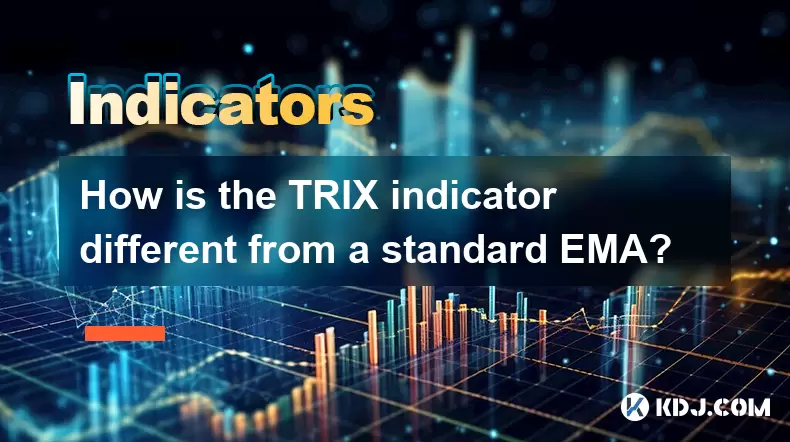
Understanding the TRIX Indicator
The TRIX (Triple Exponential Average) indicator is a momentum oscillator used in technical analysis to identify oversold and overbought conditions, as well as potential trend reversals in cryptocurrency price movements. Unlike a standard EMA (Exponential Moving Average), TRIX applies triple smoothing to price data, which significantly reduces market noise. This process involves calculating an EMA of the price, then an EMA of that EMA, and finally an EMA of the second EMA—hence the term "triple exponential." The resulting value is then used to derive the rate of change, which becomes the TRIX line. Because of this multi-layered smoothing, TRIX is far less sensitive to short-term price fluctuations than a standard EMA.
The core calculation of TRIX involves the following steps:
- Calculate the first EMA of the closing price over a specified period (commonly 14 or 18 periods).
- Apply a second EMA to the result of the first EMA.
- Apply a third EMA to the result of the second EMA.
- Compute the percentage rate of change between today’s and yesterday’s triple-smoothed EMA.
This final value is plotted as the TRIX line, often accompanied by a signal line, which is typically a 9-period EMA of the TRIX line itself. The signal line helps traders identify crossovers, which may indicate entry or exit points.
Core Differences in Calculation Methodology
The most fundamental distinction between TRIX and a standard EMA lies in the number of smoothing layers applied. A standard EMA applies one layer of exponential smoothing to raw price data, giving more weight to recent prices while still incorporating historical data. In contrast, TRIX applies three consecutive EMAs, which filters out minor price volatility and highlights only the most significant underlying trends.
Because of this, TRIX is not a direct price-following tool like EMA. Instead, it measures the momentum of a smoothed trend. The output is a line that oscillates around a zero line, where values above zero suggest positive momentum and values below indicate negative momentum. This is fundamentally different from an EMA, which remains anchored to actual price levels and is plotted directly on the price chart.
Another critical difference is the output format. While an EMA produces a price-based moving average line used to determine support/resistance or trend direction, TRIX outputs a rate-of-change oscillator. This allows it to detect divergences between price and momentum—something a standard EMA cannot do effectively.
Interpreting Signals in Cryptocurrency Trading
In cryptocurrency markets, where volatility is high, the TRIX indicator provides a clearer signal by minimizing false alarms caused by sudden price spikes. When the TRIX line crosses above the zero line, it indicates that the triple-smoothed trend is gaining upward momentum, suggesting a potential bullish shift. Conversely, a cross below zero implies increasing downward momentum.
Crossovers between the TRIX line and its signal line are also used to generate trade signals:
- A bullish signal occurs when the TRIX line crosses above the signal line.
- A bearish signal occurs when the TRIX line crosses below the signal line.
These crossovers are particularly useful in identifying trend reversals in assets like Bitcoin or Ethereum, where sudden price swings can mislead simpler indicators. Because TRIX is derived from triple-smoothed data, these signals are less prone to whipsaws compared to those generated by a standard EMA crossover strategy.
Moreover, divergence analysis is a powerful feature of TRIX. If the price of a cryptocurrency makes a new high but the TRIX line fails to surpass its previous high, this bearish divergence may signal weakening momentum and a potential reversal. Such insights are not available through a standard EMA, which only tracks price direction without momentum context.
Practical Setup and Configuration in Trading Platforms
To apply the TRIX indicator on most cryptocurrency trading platforms such as TradingView, Binance, or MetaTrader, follow these steps:
- Open the chart for the desired cryptocurrency pair (e.g., BTC/USDT).
- Navigate to the "Indicators" section and search for "TRIX".
- Select the TRIX indicator and adjust the EMA period (default is often 14).
- Optionally, enable the signal line by setting a secondary period (commonly 9).
- Customize the visual appearance, such as line color and thickness, for clarity.
Ensure that the TRIX is set to calculate from closing prices, as this is the most common and reliable input. Some platforms allow using other price points (like typical price or weighted close), but closing price is recommended for consistency.
For comparison, to add a standard EMA:
- Locate the "Moving Average" indicator.
- Choose "Exponential" type.
- Set the desired period (e.g., 20, 50, or 200).
- Apply it to the same chart.
Place both indicators on the same chart to visually compare their responsiveness. You will notice that the EMA follows price closely, often touching or crossing candlesticks, while the TRIX line remains smoother and detached from immediate price action, reflecting only sustained momentum shifts.
Advantages of TRIX in Volatile Crypto Markets
Cryptocurrency markets are known for sharp, unpredictable movements. The triple smoothing mechanism of TRIX makes it especially valuable in this environment. By filtering out short-term noise, TRIX helps traders focus on sustainable trends rather than reacting to every minor fluctuation.
For example, during a sudden 10% drop in Ethereum due to leverage liquidations, a 20-period EMA might immediately reflect this change, potentially triggering premature sell signals. In contrast, TRIX would likely remain stable, as the triple EMA process dampens the impact of such a single volatile candle. This prevents emotional trading decisions based on transient data.
Additionally, because TRIX operates as an oscillator, it enables the use of zero-line crossovers and divergence detection, which are not feasible with a standard EMA. These features are particularly effective when analyzing altcoins with erratic price behavior, where momentum shifts often precede price changes.
The signal line feature further enhances TRIX’s utility by providing a secondary confirmation mechanism. This dual-line system reduces false signals, a common issue when relying solely on EMA crossovers in choppy markets.
Frequently Asked Questions
What period setting is optimal for TRIX in crypto trading?
The 14-period setting is widely used and effective for daily charts. For shorter timeframes like 1-hour or 15-minute charts, traders often use 9 or 12 periods to increase sensitivity without sacrificing too much smoothing.
Can TRIX be used alone for trading decisions?
While TRIX provides strong momentum signals, it is best used alongside other tools such as volume indicators or RSI to confirm entries and exits. Relying solely on TRIX may miss context from market structure or volume shifts.
Does TRIX work well with all cryptocurrencies?
TRIX performs best with highly liquid assets like Bitcoin and Ethereum, where price data is consistent. For low-cap altcoins with erratic volume and price gaps, TRIX may produce delayed or misleading signals due to sparse data.
How is the signal line calculated in TRIX?
The signal line is typically a 9-period EMA of the TRIX line itself. This additional smoothing helps confirm the direction of momentum and generates crossover signals that traders use to time entries and exits.
Disclaimer:info@kdj.com
The information provided is not trading advice. kdj.com does not assume any responsibility for any investments made based on the information provided in this article. Cryptocurrencies are highly volatile and it is highly recommended that you invest with caution after thorough research!
If you believe that the content used on this website infringes your copyright, please contact us immediately (info@kdj.com) and we will delete it promptly.
- Hong Kong Stablecoin Regulations: A New Era for Crypto?
- 2025-08-26 12:50:12
- Heritage Distilling's Token Deal: A Bold Balance Sheet Strategy
- 2025-08-26 06:45:14
- Coinbase Hack, Solana Shenanigans, and Wallet Woes: What's a Crypto OG to Do?
- 2025-08-26 06:45:14
- Bitcoin, Institutional Adoption, and Volatility: A 2025 Perspective
- 2025-08-26 08:05:14
- MAGACOIN, Ethereum, and XRP Growth: What's the Buzz?
- 2025-08-26 08:30:13
- ETHZilla's Bold Moves: Share Buyback and Ethereum Holdings Under Scrutiny
- 2025-08-26 08:05:14
Related knowledge
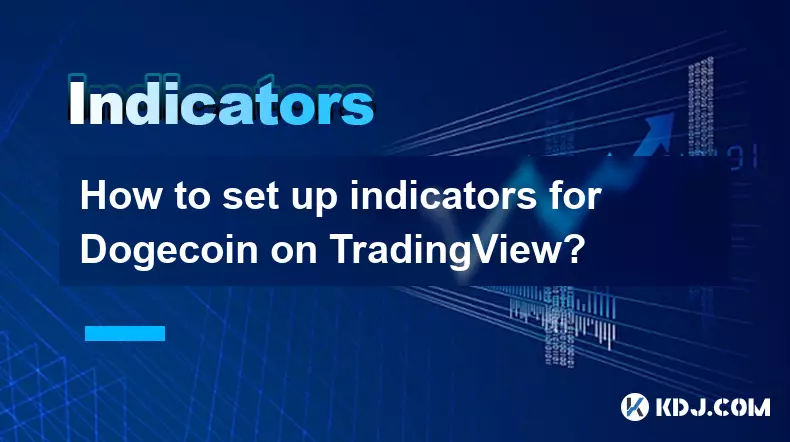
How to set up indicators for Dogecoin on TradingView?
Aug 25,2025 at 04:23pm
Understanding Dogecoin and TradingView1. Dogecoin, initially created as a meme-based cryptocurrency, has evolved into a widely traded digital asset. I...

What does it mean when the +DI and -DI cross frequently in the DMI indicator but the ADX is flattening?
Aug 11,2025 at 03:15am
Understanding the DMI Indicator ComponentsThe Directional Movement Index (DMI) is a technical analysis tool composed of three lines: the +DI (Positive...

What does the sudden appearance of a "dark cloud cover" candlestick pattern during an uptrend indicate?
Aug 13,2025 at 11:35am
Understanding the 'Dark Cloud Cover' Candlestick PatternThe dark cloud cover is a bearish reversal pattern in technical analysis that typically appear...

What does it mean when the moving average, MACD, and RSI all send buy signals simultaneously?
Aug 11,2025 at 01:42pm
Understanding the Convergence of Technical IndicatorsWhen the moving average, MACD, and RSI all generate buy signals at the same time, traders interpr...

What does it mean when both the KDJ indicator and the RSI show overbought signals simultaneously?
Aug 13,2025 at 11:35am
Understanding the KDJ Indicator in Cryptocurrency TradingThe KDJ indicator is a momentum oscillator derived from the Stochastic Oscillator, widely use...

What does it mean when the price is trading above the SAR indicator but the red dots are densely packed?
Aug 09,2025 at 11:49pm
Understanding the SAR Indicator and Its Visual SignalsThe SAR (Parabolic Stop and Reverse) indicator is a technical analysis tool used primarily to de...

How to set up indicators for Dogecoin on TradingView?
Aug 25,2025 at 04:23pm
Understanding Dogecoin and TradingView1. Dogecoin, initially created as a meme-based cryptocurrency, has evolved into a widely traded digital asset. I...

What does it mean when the +DI and -DI cross frequently in the DMI indicator but the ADX is flattening?
Aug 11,2025 at 03:15am
Understanding the DMI Indicator ComponentsThe Directional Movement Index (DMI) is a technical analysis tool composed of three lines: the +DI (Positive...

What does the sudden appearance of a "dark cloud cover" candlestick pattern during an uptrend indicate?
Aug 13,2025 at 11:35am
Understanding the 'Dark Cloud Cover' Candlestick PatternThe dark cloud cover is a bearish reversal pattern in technical analysis that typically appear...

What does it mean when the moving average, MACD, and RSI all send buy signals simultaneously?
Aug 11,2025 at 01:42pm
Understanding the Convergence of Technical IndicatorsWhen the moving average, MACD, and RSI all generate buy signals at the same time, traders interpr...

What does it mean when both the KDJ indicator and the RSI show overbought signals simultaneously?
Aug 13,2025 at 11:35am
Understanding the KDJ Indicator in Cryptocurrency TradingThe KDJ indicator is a momentum oscillator derived from the Stochastic Oscillator, widely use...

What does it mean when the price is trading above the SAR indicator but the red dots are densely packed?
Aug 09,2025 at 11:49pm
Understanding the SAR Indicator and Its Visual SignalsThe SAR (Parabolic Stop and Reverse) indicator is a technical analysis tool used primarily to de...
See all articles





















